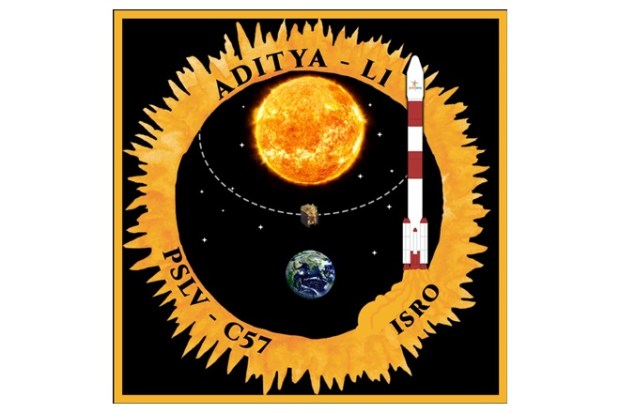The scientific purpose of the ADITYA L1 mission is underscored by the lessons from history, most notably the Carrington Event of 1859. This solar storm, propelled by a potent coronal mass ejection (CME), demonstrated the profound impact of solar activity on Earth’s technology.
“The unexpected geomagnetic disturbance caused widespread disruptions in telegraph systems, triggering unprecedented auroral displays in non-polar regions. The Carrington Event remains a stark reminder of our vulnerability to space weather, emphasizing the urgency to comprehensively comprehend solar dynamics. Our upcoming mission aims to elevate this understanding by exploring solar phenomena from the unique vantage point of the first Lagrange point (L1),” explains Dr Srimathy Kesan, Founder, CEO Space Kidz India.
What is the significance of this mission?
According to Dr Kesan, “In light of the ever-increasing interdependence of technology and daily life, including power grids, navigation systems, and communication networks, the implications of space weather disturbances are monumental. Recent instances of Canada’s blackouts underline the criticality of safeguarding these systems against solar disruptions. Moreover, the proliferation of satellites and their strategic importance in various sectors heightens the necessity for advanced space weather forecasts and preparedness. While satellite expansions offer unprecedented opportunities for connectivity, weather forecasting, and navigation, they also amplify the potential consequences of solar-induced anomalies.”
Now, more than ever is the opportune moment to invest in pioneering missions like ADITYA L1. By unravelling solar mysteries and enhancing our predictive capabilities, we fortify our technological infrastructure against solar disturbances. This aligns seamlessly with our nation’s aspiration to cultivate technological innovation and economic resilience. “As we journey towards launching ADITYA L1, we signify our commitment to scientific exploration and our resolve to create a future where advancements in space science and technology coalesce harmoniously with our economic ambitions,” she says.
About the Mission: Dr Kesan answers questions posed by Financial Express Online:
“Upon its launch, ADITYA L1 will journey to its unique vantage point, the L1 Lagrange point. This strategic position, approximately 1.5 million kilometres away from Earth, offers an unobstructed view of the Sun, free from eclipses and shadows. This halo orbit around L1 ensures continuous solar observation, providing unprecedented insights into the Sun’s activities.”
Also, “The mission will take approximately four months to reach its designated halo orbit around L1. During this journey, meticulous calculations and precision manoeuvres will guide ADITYA L1 to its intended position, where it will embark on its scientific investigations.”
What kind of scientific experiments are expected to be carried out?
According to her, “The scientific experiments that ADITYA L1 is set to embark on are nothing short of groundbreaking. Equipped with a suite of specialized instruments, the mission aims to observe and analyze various aspects of the Sun’s behaviour.”
These instruments include:
- Visible Emission Line Coronagraph (VELC): This instrument captures spectral data of the solar corona, shedding light on its temperature and density.
- Solar Ultraviolet Imaging Telescope (SUIT): Offering high-resolution imagery of the photosphere and chromosphere, aiding in the understanding of these essential solar layers.
- Solar Low Energy X-ray Spectrometer (SoLEXS): Focused on observing soft X-rays, revealing surface activity on the Sun.
- High Energy L1 Orbiting X-ray Spectrometer (HEL1OS): Providing crucial hard X-ray data, contributing to insights into high-energy solar phenomena.
- Aditya Solar Wind Particle Experiment (ASPEX): Enabling in-situ analysis of solar wind particles, particularly protons and heavier ions, for comprehensive solar wind studies.
- Plasma Analyser Package For Aditya (PAPA): Analyzing electrons and heavier ions in the solar wind through in-situ observations.
- Advanced Tri-axial High-Resolution Digital Magnetometers: Measuring magnetic fields in the solar corona, enhancing our understanding of solar magnetic dynamics.
Why are these instruments important?
“Each instrument plays a crucial role in decoding solar mysteries, from the corona’s spectral characteristics to solar wind composition and magnetic field dynamics. ADITYA L1’s journey to the Sun holds promises of transformative insights into solar dynamics, space weather, and their implications for our technology-driven world. As we venture into this new chapter of space exploration, we are poised not only to expand our scientific knowledge but also to fortify our preparedness against the ever-evolving challenges of space weather,” explains Dr Kesan.
This mission stands as a testament to India’s commitment to scientific advancement and its drive to explore the celestial wonders that hold the keys to our future.
The significance of ADITYA L1’s mission patch

This patch has been designed by Sethuramalingam on behalf of Space Kidz India, adding a distinctive touch to this voyage of discovery. This emblem captures the essence of our endeavor, representing the spirit of curiosity, innovation, and our unyielding dedication to uncovering the Sun’s enigmas.
